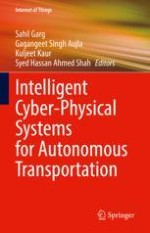Abstract
Transportation science is a research field with many categories, including information science, control science, Earth science, management science, etc. How to integrate different areas to make all the components work efficiently acts as a challenging task. Characterized by the strong modeling and computation ability, AI technologies have been applied to many areas in contemporary society. To this end, the deployment of artificial intelligence (AI) technology into transportation systems leads to a typical form of intelligent transportation systems: AI-Deployment transportation systems (AID-TS). The AID-TS effectively apply advanced AI technology into transportation, service control, and vehicle manufacturing, in order to strengthen the connections among vehicles, roads, and users. To this end, real-time autonomous transportation systems with considerable efficiency and reliable safety can be formulated. Through the harmonious and close cooperation among people, vehicles, and roads, the AID-TS are able to improve transportation efficiency, alleviate traffic congestion, improve capacity of road networks, and reduce energy consumption. Nowadays, countries represented by Japan and the United States have widely studied application of the AID-TS. At the same time, China is also actively planning its research on AID-TS. Generally speaking, AID-TS will become a wide and meaningful application in the future smart city around the world. From the perspective of system composition, the AID-TS are a kind of complicated and comprehensive systems that can be mainly divided into several subsystems: transportation information service systems, transportation management systems, public transportation systems, and vehicular control systems. Therefore, this chapter is organized via three aspects of contents: 1) review for AID-TS; 2) architecture for AID-TS; and 3) business scenarios for AID-TS. This chapter is responsible for introducing basic conception of AID-TS and is composed of three parts: overview, prevalence, and development status. In this chapter, architecture for AID-TS as well as key technologies is described. From the bottom to the top, the whole architecture can be categorized into three layers: sensing layer, networking layer, and application layer. This chapter describes four typical business scenarios for AID-TS in four parts, containing autonomous transportation management, vehicular control, public transportation scheduling, and transportation information service.
